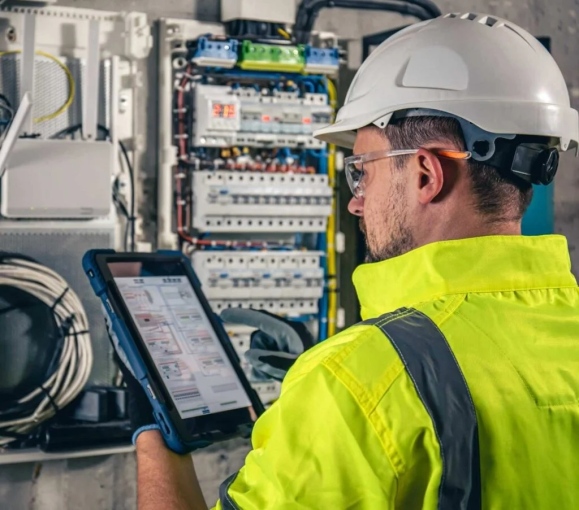Petro Niru Arta K. CO. Limited
What are repairs?
Repairs are actions taken to restore the proper functioning of an asset, bringing it back to optimal working condition. The level of repairs required depends on the type of equipment failure, which generally has two main types of failure:
Total breakdown: Refers to breakdowns that make assets unavailable for use and equipment unable to serve its purpose unless attended to. For example, engine failure disables your car and makes it impossible to drive until you take it to a mechanic.
Partial failure: In this example, the equipment still functions partially despite the failure. You can still use the equipment, but it's either unsafe or at minimal efficiency. For example, a driver may choose that their vehicle is running with a dirty air filter or notice that the car's air conditioner is not as cold as it used to be. In general, you should fix minor failures as quickly as possible so they don't lead to complete failure.
Although equipment failure is inevitable, most failures are preventable. This is where preventive maintenance can help you avoid major and costly repairs. So let's review together what maintenance means.
What is maintenance?
The concept of maintenance refers to keeping the equipment in good working condition. This is done to maintain performance, efficiency and safety throughout the life of the device. The difference between repair work and maintenance is that the purpose of repairs is to restore performance while maintenance seeks to maintain performance.
In simpler terms, repairs are done after the machine stops and to minimize losses, while maintenance is to prevent unexpected asset failure.
Maintenance both have the same end goal: to allow you to get the most out of your assets. It is their approach to achieving these goals that makes them different from each other. As expected, maintenance costs can vary significantly based on the complexity of the machinery and parts involved.
Types of maintenance and repairs
There are various methods for maintenance and repairs, some of the most important of which are mentioned below.
Predictable repairs
It is another method of maintenance in which it is tried to predict the failure time of the devices and prevent it before the failure by using different tools.
Maybe you have a question, what is the difference between a preventive note and a predictive note? It should be said that in the preventive net, regardless of checking the current condition of the equipment, they are checked every so often based on different parameters. For example, a production device should be checked after 300 working hours based on the manufacturer's recommendation. But in the predictive note, actions are taken based on the current performance of that device. In predictive net, new technologies such as data analysis science and artificial intelligence can help a lot.
Example: speedometer, thermometer rotation measurement, ammeter temperature measurement, ampere measurement
Maintenance and corrective repairs
Corrective maintenance is a category of maintenance tasks performed to correct and repair faulty systems and equipment. The purpose of corrective maintenance is to restore systems that have failed. However, corrective maintenance is very different from emergency maintenance where there is an immediate need for
repairs.
Maintenance and breakdown repairs
Breakdown repair is the repair and maintenance that is done on a broken piece of equipment. In fact, it is a method in which the inspection and replacement of
parts is not done, but in this method we leave the damaged equipment and then repair or replace it
Benefits of maintenance and repairs
- Extending the lifespan of assets: One of the most common reasons why businesses should use a variety of maintenance and repair methods is to maximize the lifespan of their assets. Having the patience to regularly inspect, clean, and care for an expensive piece of equipment helps the operations department maximize productivity and reduce costs by avoiding costly repairs and replacements.
- Avoids unplanned downtime: Unexpected outages can cause significant problems for any business. Financial losses, unhappy customers and operational disruptions can lead to bigger problems that are unavoidable and costly to fix. Accurate maintenance can help businesses avoid unexpected outages and ensure operations run smoothly.
- Reduces costs: Most industrial machines used for commercial operations require a small initial cost; So it makes sense to hold these assets to get the most out of them. Failure to implement maintenance practices leads to machine breakdowns and costs the business more through avoidable repairs and replacements
Disadvantages of maintenance and repairs
- Additional costs: Although good maintenance practices are often more beneficial than we want to call them additional costs, the bottom line is that they still cost money to implement. It is important for companies to know when to perform maintenance and repair activities to avoid unnecessary costs through excessive maintenance.
- Lost productivity: Scheduled maintenance and repair often require equipment to be completely shut down and idle for a certain period of time. If the necessary contingencies are not prepared in advance, lost productivity translates into financial losses and possible disruption of operations.
- Potential safety hazard: Failure to follow proper maintenance and repair protocols, such as ensuring machinery is completely shut down before maintenance, can cause serious injury and even death to personnel.
New methods of maintenance and repairs; Using IT capacities
As the importance of the Net for businesses becomes clear, requests for improving maintenance and repair systems are increasing day by day. Advancing technologies offer new and unique solutions to a multitude of obstacles and will greatly impact the future of maintenance and repair. There are various examples of these effective technologies, but at the top of them are the Internet of Things, artificial intelligence, big data and virtual reality. In the following, we mention the effects of some of them.
Internet of things in maintenance and repairs
The Industrial Internet of Things (IIoT) is an interconnected network of devices and machines that collects data and communicates it in real-time and directly to the maintenance team. This technology focuses on machine automation and helps employees and managers minimize machine downtime by providing valuable assets.
Big data in maintenance and repairs
Another new method of maintenance and repairs is the applications of big data in this field. Each of the existing devices and equipments produces data during their lifetime; But the problem is that these data are not normally analyzed properly.
However, the use of software systems such as IIoT platforms makes it possible to process this data and reveal valuable information about the health and performance of critical assets.
Big data provides an overview of a plant's assets, showing which machines are healthy, which need more attention, and even how assets interact and influence each other. Teams can take this information and apply it to their daily maintenance routines to improve asset performance, streamline maintenance processes, and customize asset settings.
For example, big data is used to precisely define a device's P_F (potential of failure) plot; Describes the point at which the asset is unable to perform the required function. By more precisely defining the P_F interval, maintenance teams can plan maintenance and repairs based on device needs, not feel or failure.
Cloud computing in maintenance
Due to the need to access data anywhere and anytime in an easy way, more facilities are needed instead of traditional on-site data storage. Cloud computing is a technology that can help in this regard, and this is where we need to turn to cloud-based data solutions. With cloud storage, data is stored on a secure, external server hosted by the vendor. This data can be accessed remotely by an authorized user with an internet connection.

